
Topics
Four white New York City police officers accused of murdering Amadou Diallo unleashed a 41-shot barrage with no warning and kept firing as the victim was down on the ground, according to prosecutors’ opening arguments yesterday in the trial of the officers. [includes rush transcript]
The six-man, six-woman jury in the trial also heard from the state’s first witness yesterday, an NYPD crime scene detective who testified finding the sidewalk, stoop and outside vestibule of Diallo’s Bronx apartment building littered with bullets.
The officers–Sean Carroll, Edward McMellon, Kenneth Boss and Richard Murphy–face 25 years to life if convicted of the second-degree murder of Diallo, who was gunned down February 4th of last year in the lobby of his apartment building.
The slaying touched off widespread demonstrations against police brutality and impunity in New York City, and acts of civil disobedience that led to over 1,200 arrests.
The trial was moved to Albany after an appeals court ruled that negative publicity made it impossible to find an impartial jury in New York City. Bronx County, the original venue for the trial, is 39 percent white. Albany County is about 89 percent white.
Tape:
- Report filed by Jad Abumrad, reporter for Pacifica station WBAI.
Guest:
- Rosa Clemente, Co-chair, Capitol Region Justice for Diallo Committee.
Transcript
AMY GOODMAN: Four white New York City police officers accused of murdering Amadou Diallo unleashed a forty-one shot barrage, with no warning, and kept firing as the victim was down on the ground. This according to prosecutors’ opening arguments yesterday in the trial of the officers.
The six-man, six-woman jury in the trial also heard from the state’s first witness yesterday: an NYPD — that’s New York Police Department — crime scene detective, who testified finding the sidewalk stoop and outside vestibule of Diallo’s Bronx apartment building littered with bullets.
The officers, Sean Carroll, Edward McMellon, Kenneth Boss, and Richard Murphy, face twenty-five years to life if convicted of the second-degree murder of Diallo, who was gunned down February 4, 1999 in the lobby of his apartment building.
The slaying touched off widespread demonstrations against police brutality and impunity in New York City, and acts of civil disobedience led to over 1,200 arrests. The trial was moved to Albany after an appeals court ruled that negative publicity made it impossible to find an impartial jury in New York City. Bronx County, the original venue for the trial, is 39% white. Albany County, where it is now, is about 89% white.
We’re going to first go to a report filed by Jad Abumrad, he’s a reporter with Pacifica Radio’s WBAI in New York.
ERIC WARNER: In the 1990s, in Bronx County, in Albany County, or anywhere else, a human being should have been able to stand in the vestibule of his own home and not be shot to death.
JAD ABUMRAD: That was how Bronx prosecutor, Eric Warner, opened today’s trial. Warner claimed the four officers on trial never called out warnings, like “Stop!” or “Don’t Move!” before they opened fire on the twenty-two-year-old West African immigrant. Warner’s remarks gave an early indication that the prosecution will be focusing its arguments on the number of bullets fired: forty-one.
ERIC WARNER: We will prove, by the number of shots fired at very close range, that these four defendants intended to kill him, and therefore are guilty of murder.
We will also prove, by the number of shots fired at this man at very close range and into the vestibule of an occupied dwelling, that these four defendants acted recklessly and with depraved indifference to Amadou Diallo’s life and the lives of the people who live there.
When all of the evidence is in, it will be clear to all, beyond a reasonable doubt, that these defendants were not justified in firing all of those shots that penetrated an occupied dwelling, let alone in killing Amadou Diallo, who was armed with nothing more than his wallet, his beeper and his keys.
JAD ABUMRAD: The defense painted a picture of Diallo as a suspicious-looking suspect who, after failing to stop on their command, turned and pointed a dark object at them. Defense attorney Bennett Epstein countered prosecution claims by saying that the four officers identified themselves with their badges, and that it was Diallo who forced them to act in what they thought was self defense.
BENNETT EPSTEIN: Members of the jury, we believe that the evidence will show that had Mr. Diallo stopped to answer the officers’ questions, the whole thing would have ended peaceably moments later, and we wouldn’t be here.
JAD ABUMRAD: Epstein went on to say that the forty-one shots, which to many activists have become a symbol of excessive police force, were actually fired in under four seconds, and that burst of gunfire was the result of fear, instinct and training.
BENNETT EPSTEIN: Now, ladies and gentlemen, we’re going to prove to you what was going through Sean Carroll’s mind, as he sees this reaction from Mr. Diallo and as he sees the series of events unfold and the black object coming out of Mr. Diallo’s pocket towards him. His training is going through his mind. His experience is going through his mind. He’s full of fear. And we will prove to you, ladies and gentlemen, exactly what was going on in his mind, because he verbalized it. When the black object came out of Mr. Diallos’s pocket in that dimly lit vestibule, he yelled, “Gun!”
JAD ABUMRAD: For the rest of the day, attention turned to the prosecution’s opening witness, Joseph Flannino, of the NYPD Crime Scene Unit. Flannino was among the first on the scene after the incident, and it was his job to document every aspect of the shooting.
For several hours, the prosecution used Flannino’s testimony to carefully construct the scene of the slaying: the vestibule of Diallo’s Bronx apartment one year ago this week. They showed a model of Diallo’s neighborhood and numerous photos of bullets scattered in the hall outside Diallo’s apartment and on the street outside.
Flannino’s testimony raised the issue that may define the trial: light. Was it too dark for the officers to see Diallo as he stood in his doorway? Or, was there enough light for them to make an informed judgment? Flannino claimed that the street lights outside Diallo’s window provided illumination enough for him to write in his notepad without turning on the lights. The defense reminded the jury that Flannino did not actually witness the shooting and that lighting conditions may have been different at the time.
Outside, protesters continued their demonstrations. In an emotional moment, Amadou Diallo’s father took the podium.
SAIKOU DIALLO: Right in his doorsteps, in cold blood. Cold blood. He had nothing in his hand. Shooting him, killing him is another. Shooting him forty-one times, this is discrimination.
JAD ABUMRAD: In a case fraught with racial tensions, the defense petitioned courts to move the trial from the Bronx to Albany County, which is largely white. Defense attorneys claim that large numbers of police in the Bronx harbor inherent distrust toward the police.
Yesterday, defense attorney Stephen Worth chided Reverend Al Sharpton, who has led the protest, for creating what he called a “circus” outside the courtroom. And in court today, Worth tried unsuccessfully to convince the judge that ongoing protests have created political pressure, which has biased the trial.
STEPHEN WORTH: How did we get here? We got here because there was a furor created by people who have their own agendas to forward over this shooting.
UNIDENTIFIED VOICE: Judge?
JUDGE: Sustained. Confine your comments to what you believe the proof will be.
STEPHEN WORTH: We believe the proof will show the total absence of any motive in this case, other than self-defense.
JAD ABUMRAD: Legal experts predict that in the coming days the issue that will take center stage is the trajectory of the bullets which killed Amadou Diallo. Prosecution experts are expected to make the argument that Diallo fell down after the first few bullets and was shot while lying down. The defense is expected to counter with experts of their own, who claim Diallo was standing during the incident.
The trial will continue tomorrow at 9:15 a.m. I’m Jad Abumrad.
AMY GOODMAN: And that report from WBAI Pacifica reporter, Jad Abumrad.
You are listening to Democracy Now!, as we turn now to a guest who was in the courtroom yesterday: Rosa Clemente, co-chair of the Capitol Region Justice for Diallo Committee. Welcome to Democracy Now!
ROSA CLEMENTE: Thank you.
AMY GOODMAN: Can you tell us, from your perspective, what it was like inside and outside the courthouse yesterday?
ROSA CLEMENTE: Well, outside, we did have some protesters there in a vigil, a little bit after noon, when the lunch break occurred. I was mostly in the courtroom later on in the afternoon, but was watching the opening arguments on Court TV. And I was rather disgusted, to say the least, that particularly Stephen Worth, in his opening arguments, could allude to the fact that destiny brought us to this day, that —
AMY GOODMAN: Stephen Worth, being the defense attorney.
ROSA CLEMENTE: Right. And just to see the look on Mrs. Diallo’s face later on in the afternoon, it was just such a painful experience for her and the entire family. But just that this man could get up there and say that destiny brought us to this place, if he had only listened to police commands, he wouldn’t have been shot at this many times, we found that repulsive, to say the least.
AMY GOODMAN: Can you tell me a little more about your group, the Capital Region Justice for Diallo Committee? Where are you based and how was it formed?
ROSA CLEMENTE: Well, we were formed a couple days after the venue change was announced, understanding the reasons why the venue change was brought to Albany, but also understanding that many people here — or many people outside of the Albany area don’t think that there are activists here and don’t think that we would be able to pull off something like this, where we would be a daily presence in front of the courthouse.
We’re based at an organization called the Social Justice Center, but our committee is really a coalition of many, many groups that just came together very quickly and just started organizing to support the family, but also to deal with our issues up here of police brutality and terror.
AMY GOODMAN: What kind of issues are you talking about in the Albany area?
ROSA CLEMENTE: Albany has a long, long history of police brutality, as far back as 1984, when Jessie Davis, a mentally ill man, was shot by the police and the autopsy pictures showed that all he had was a toy truck in his hand, to last year’s beating of a college student, Jerome Henderson, outside of bar in a college area by two officers who had previous numerous complaints filed against them by many other Albany residents. These two officers beat this college student and weren’t even indicted.
November 13th of this year, while police were looking for an alleged shooting suspect, they basically came into the Arbor Hill community center, which — Arbor Hill community, which is the black community in the Albany area — one of the black communities — and basically came in as storm troopers on a Sunday morning looking for this alleged shooter, going to businesses, ransacking homes, and they also came out in SWAT and riot gear. So we have a very brutal history of Albany police tactics.
AMY GOODMAN: Back to the trial of Amadou Diallo, you talked about the defense opening argument. What about the prosecutor’s opening argument, and were you satisfied with that?
ROSA CLEMENTE: Oh, I was definitely satisfied. I think the prosecution did a great job with the first witness also, the detective that was on the scene. And I think later on in the afternoon, when the defense attorneys were questioning the detective that was the first one on the scene, they tried very hard to talk about things like: Was the scene contaminated? Once you left the scene, do you think people were angry enough to kick the bullet fragments around and to kick the door? And things like that.
I don’t think that worked. And I think the defense attorneys have not only opened doors to things like looking into these police officers’ background by saying something about the Civilian Complaint Review Board, and things like that, I think they’re not going to be seen as — I don’t want to say conciliatory — but I don’t think the jury is going to like them, particularly Stephen Worth. I think he was very abrasive, and some of the things he said were just — would have been repulsive to anybody in that courtroom.
AMY GOODMAN: Well, Rosa Clemente, I want to thank you for being with us, co-chair of the Capitol Region Justice for Diallo Committee based in Albany. Again, Albany, New York’s capital, it is 89% white, and that is part of the controversy around the placing of the trial there. It was originally going to be held in the borough, the Bronx, which is overwhelmingly people of color.

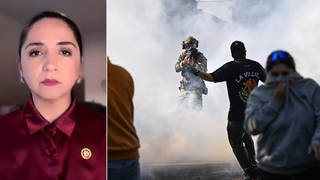
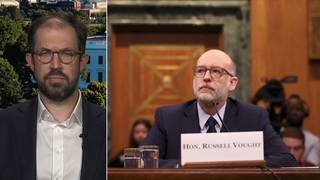
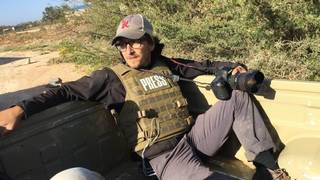
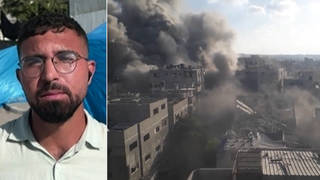





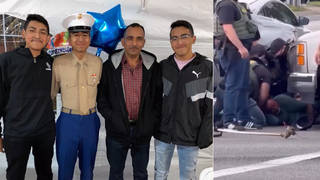
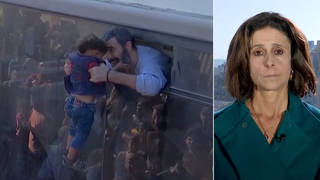
Media Options